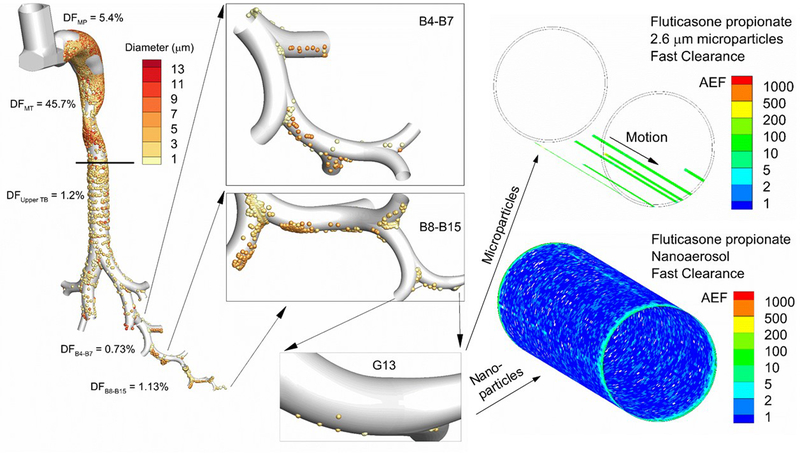Figure 5.
Overview of complete-airway modeling beginning with the inhaler and progressing through simulation of corticosteroid dissolution, absorption and clearance in airway generation G13. Deposition fraction (DF) from Walenga et al. [95] for the Flovent HFA MDI in the device mouthpiece (MP) and different regions of the conducting airways including the mouth-throat (MT), upper tracheobronchial (TB) region containing the main bifurcation (B1) through B3, and bifurcation segments B4–B7 and B8–B15. Magnified views of deposited particles in the lower airways are shown in the panels, including the deposition of particles in the size range of 1–3 μm in airway generation G13. Panels on the right side illustrate post-deposition absorption and clearance of the predicted deposited drug mass in G13 formulated as either a microparticle or true nanoaerosol. Values of the absorption enhancement factor (AEF) into respiratory epithelial cells are contoured, with AEF values below 0.1 excluded (i.e., left clear). AEF represents the local absorption in a 16×16 matrix of surface epithelial cells normalized by the total area-averaged absorption in the small airway geometry. An AEF of 1000 in a single element indicates 1000 times more inhaled corticosteroid absorption in a 16×16 matrix of cells compared to the total dose per total area.
Adapted from Longest and Hindle [14] with permission of Springer Nature.

